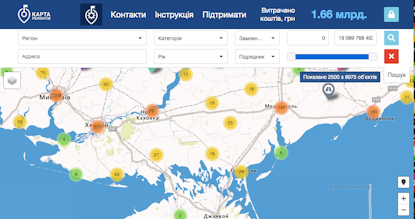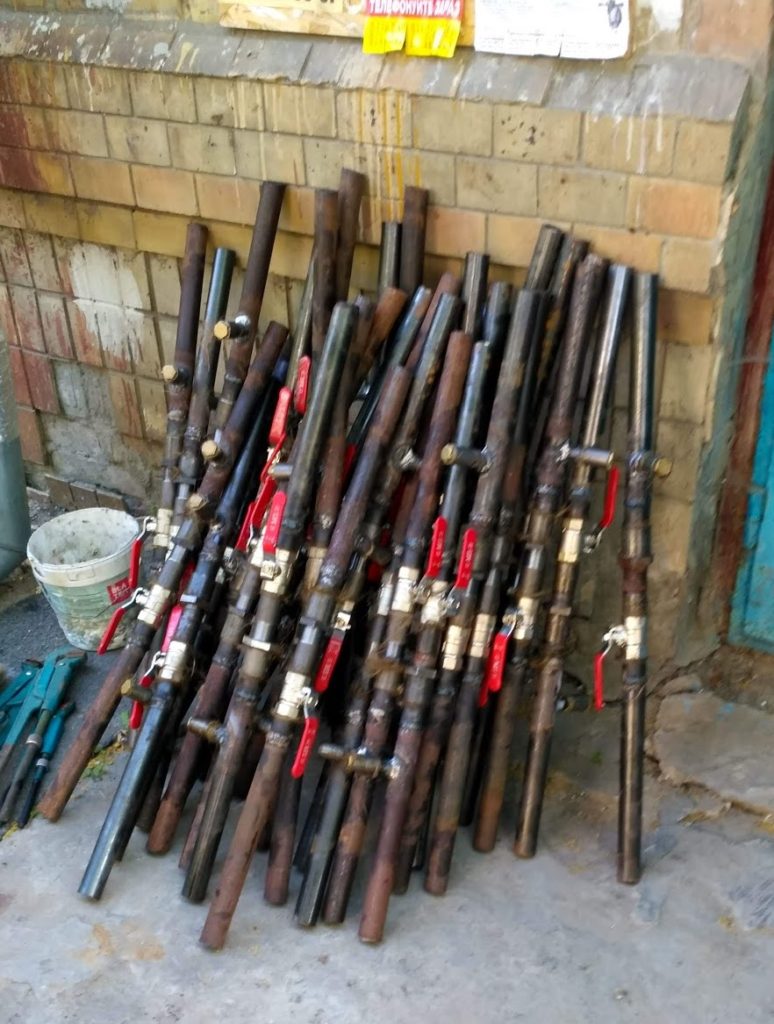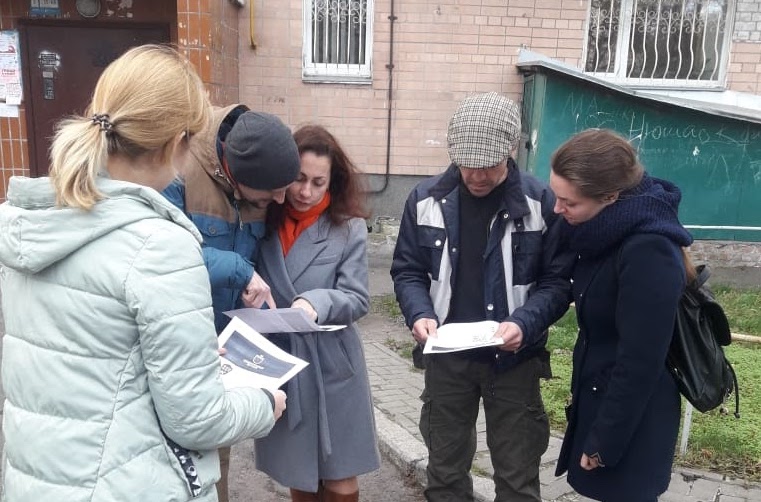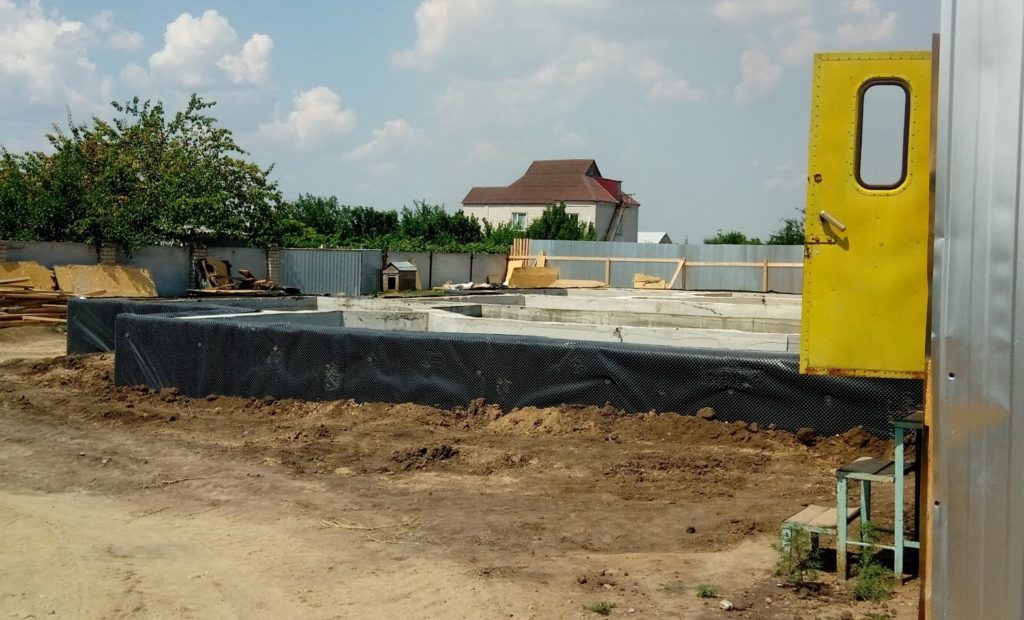Anti-Corruption Repairs Map: The mobile app helping residents to verify procurement projects

More than 50,000 Ukrainians have used the Repairs Map to check what public works projects have been promised and paid for in their neighborhood, and to ensure they are completed as planned. Now, the creators of the tool are using their skills to tackle a new challenge: tracing procurement for Covid-19 emergency supplies.
Let’s be honest: we’re rarely concerned when a health clinic is built on the other side of town or about the quality of highway maintenance unless we use that road. But we do care whether elevators work in our apartment block or if we can expect a school for our kids to open in our neighborhood.
This is the idea behind the Repairs Map, the signature product of the Ukrainian organization Anti-Corruption Headquarters. The tool allows residents to see taxpayer-funded repairs in their neighborhood — anything from patching potholes on a nearby road to fixing the school roof, to replacing heating systems in your house or tiling footpaths in a park.
Meet Veronika, a woman from Kyiv, Ukraine. She visits map.shtab.net on her phone and the geolocation service finds her address. A list of projects nearby pops up and she sees that all sewer pipes in her house were supposedly replaced a few years ago. From the attached documents, she learns that the contractor has already been paid. But that’s the house she lives in, and she could swear no pipes have been replaced in over a decade!
Unfortunately, stories like these are common in public procurement — there’s a contract, there’s a certificate of completion, the payment has been made, but no actual work has been done. That’s why it’s so important not only to publish open data on government contracting, but to also encourage its use for civic oversight.
But back to Veronika. The Repairs Map has an option to submit a complaint, and she does just that, writing that no pipes have actually been replaced. Lawyers at the Anti-Corruption Headquarters see her message, and prepare an appeal to the procuring entity. Veronika is shocked when, just a few days later, new pipes are delivered to her home.

This story encapsulates perfectly the course of action that the Repairs Map offers. A user finds all tenders for repairs near their home. They can check whether the works have been performed within the established deadline, and whether they are complete and carried out satisfactorily. If there’s any doubt, they submit a complaint with the Anti-Corruption Headquarters experts. The experts verify this information, and if the suspicions are true, they start a process to seek justice using the official channels, which are often unknown or too challenging for citizens to go through, to file appeals to public authorities and law enforcement.
How the Anti-Corruption Repairs Map works
The first prototype of the Anti-Corruption Repairs Map was created in 2015. The following year, Ukraine’s transparent Prozorro e-procurement system was introduced and became mandatory for all public procurement. This enabled the developers to collect data on all repairs in Ukraine and visualize them on the map. Yet, the biggest upgrade to the map happened in 2018, when the Anti-Corruption Headquarters developers set up automatic data integration with the Prozorro system. Once a public agency uploads the agreement signed with a contractor into the Prozorro system, it immediately appears on the Repairs Map as well. Just think how much time and how many resources this feature saved for the Anti-Corruption Headquarters. About 10 people used to update the website manually before.
However, the Repairs Map still needs quite a lot of resources to be effective. Most goes toward promotional activities and training communities on how to work with the tool, submit their feedback etc. While maintaining the technical infrastructure is relatively easy and low cost.
For the project to work, it’s important that a large base of users know about the opportunity to check procurement for repairs in their area. That’s why the Anti-Corruption Headquarters team puts a big emphasis on reaching out directly to as many citizens as possible, and has visited all 25 regions of Ukraine. What does a typical regional trip look like? There’s a press event for local media, training for activists, ads are posted on the streets. And often the Anti-Corruption Headquarter team inspects repairs, and involves local citizens in these efforts.
During their trips, the team also tries to engage with the local authorities, with the aim of getting the Map featured on official websites. It’s available on several city council websites so far. The Anti-Corruption Headquarters also enlists volunteers to help with promotion, and it has regional coordinators in every major city. This strategy is working. Over 50,000 citizens have already used the map.

For the map to help its users not only blow off some steam but actually achieve the expected results, it needs to have qualified lawyers and experts available.
When the Anti-Corruption Headquarters team received a complaint from a Voznesensk resident, they had a hard time believing it. In late 2018, the contractor received an advance payment of almost UAH 11 million (about USD 400,000) from the local authorities to build an orphanage in the city. The contract was expected to be completed within a year, yet, the company only laid the foundation, and the construction stopped. Later, Voznesensk city council tried to recover the advance payment, but the contractor refused to give it back. The council tried to go to court but did not find the funds to pay the court fee. The situation seemed to have hit a dead end, but the Anti-Corruption Headquarters’ lawyers reported this to the local prosecutor’s office, which resulted in a criminal proceeding. This time, it was the Voznesensk prosecutor who went to the court, demanding that the contractor pay almost UAH 11 million in penalties.

Public procurement in Ukraine is among the most transparent systems worldwide. But, there is still much to be achieved to ensure violations are punished. Civil society organizations play an important role to gradually resolve these issues. The Anti-Corruption Repairs Map has already helped to recover UAH 18 million, or about USD 650,000, in public funds since the tool was created.
Olha Ivanova, Head of the International Department at the Anti-Corruption Headquarters shares what can be learned from this experience: “First, fighting against corruption should be made easy for citizens. This means we need to focus on digital technologies. Secondly, engaging people is easier if we work with sectors they care about most.”
Recently, the organization had an opportunity to tackle another practical challenge. And it rose to the occasion. With COVID-19 procurement of protective equipment in the news, the Anti-Corruption Headquarters launched a new product — the Coronavirus Procurement Map. Using the map, any user can see how much money any hospital has spent on COVID-19 procurement and where this money went. Of course, there’s also the option to submit a complaint.
A common concern is that despite completed tenders and agreements, hospitals demand that patients buy medicines or other medical products on their own. In the first month alone, 13,000 people used the map. To encourage the public and the media to take a closer look at coronavirus procurement, the Anti-Corruption Headquarters announced a contest for journalism investigations on the subject.
This shows that the Repairs Map is an easily scalable project. Together with the Open Contracting Partnership, the Anti-Corruption Headquarters is now working on making the software behind this service easily replicable for new tools; new sectors, new countries. And more opportunities to control public procurement worldwide.